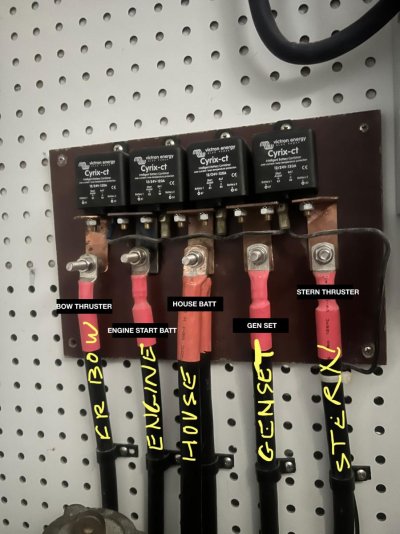chruzz
Newbie
- Joined
- Oct 24, 2021
- Messages
- 4
- Vessel Name
- AOZORA
- Vessel Make
- CLIPPER Hudson Bay 390
Can anyone have a look at the image and shed light on why the VSR mounting elbow from the engine has gotten so hot that it has become black and melted the board it was mounted to?
I noticed it after my bow thruster battery was dead.
Alternator is 160amp but the VSRs are only 120amp.
Mastervolt Mass Combi Ultra 12/3000 inverter/charger
Attached is wiring diagram of boats 12v.
Lastly, is this VSR mounting setup how other boats are wired?
I noticed it after my bow thruster battery was dead.
Alternator is 160amp but the VSRs are only 120amp.
Mastervolt Mass Combi Ultra 12/3000 inverter/charger
Attached is wiring diagram of boats 12v.
Lastly, is this VSR mounting setup how other boats are wired?


